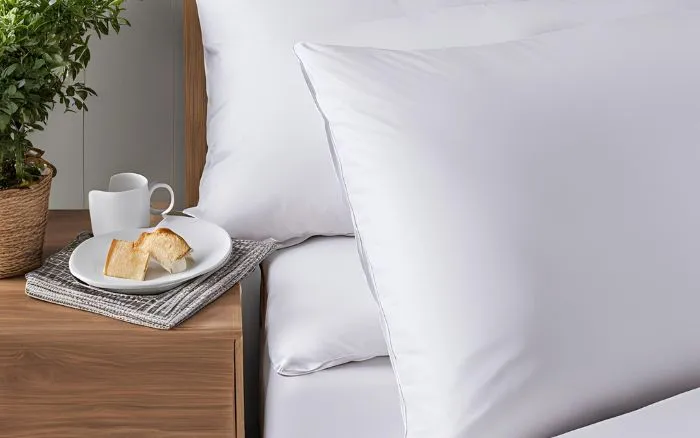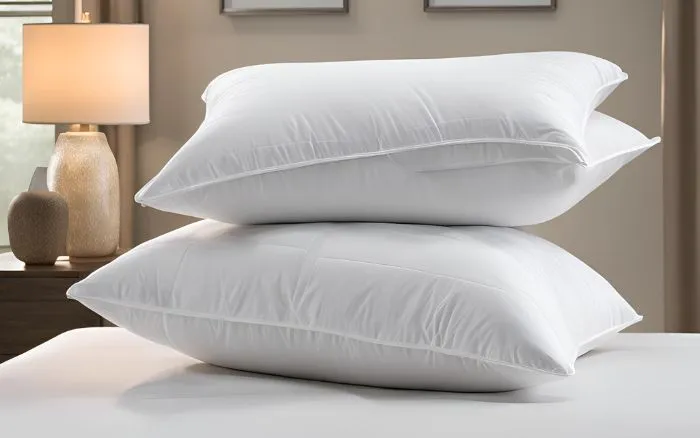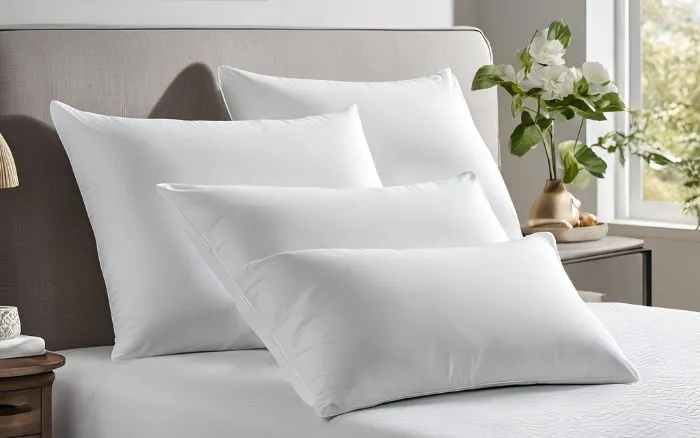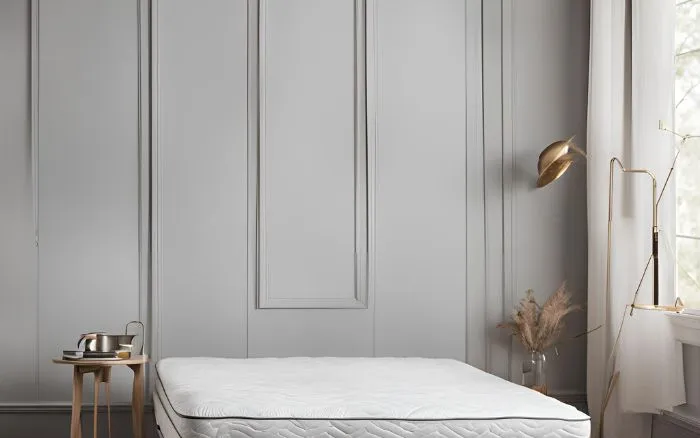Maintaining Sleep Hygiene with Therapeutic Bedding Accessories

Introduction
Welcome to our comprehensive guide on maintaining sleep hygiene with therapeutic bedding accessories. In this article, we will explore the benefits of maintaining sleep hygiene and delve into the various aspects of incorporating therapeutic bedding into your bedtime routine. Quality sleep plays a crucial role in overall well-being, and with the right bedding accessories, you can enhance your sleep environment for a more restful and rejuvenating experience.
Benefits of Maintaining Sleep Hygiene
Maintaining sleep hygiene is essential for promoting optimal sleep quality and overall health. By incorporating therapeutic bedding accessories into your sleep routine, you can experience various benefits such as improved relaxation, enhanced stress relief, and better sleep regulation. These accessories are designed to create a soothing sleep environment that promotes mental and physical well-being, leading to a more restorative and rejuvenating sleep experience.
Understanding Sleep Hygiene
Sleep hygiene refers to a set of practices and habits that are conducive to sleeping well on a regular basis. It encompasses a variety of factors including bedroom environment, bedtime routines, and the use of supportive bedding accessories. Understanding sleep hygiene involves recognizing the impact of external factors such as light, noise, and temperature on the quality of sleep. With therapeutic bedding accessories, individuals can address these external factors to create an optimal sleep environment that supports healthy sleep patterns and overall well-being.
Choosing Therapeutic Bedding Accessories
1. Mattresses and Pillows
Investing in high-quality mattresses and pillows is fundamental to achieving optimal sleep hygiene. The right mattress and pillow can provide proper support and alignment for the body, leading to improved sleep posture and reduced discomfort. Memory foam mattresses and orthopedic pillows are popular choices for promoting spinal alignment and alleviating pressure points, resulting in better sleep quality and overall comfort.
- Memory foam mattresses conform to the body’s shape, providing customized support and reducing motion transfer, making them ideal for couples.
- Hybrid mattresses combine the support of innerspring coils with the comfort of memory foam, offering a balance of support and pressure relief.
- Latex mattresses are naturally cooling, hypoallergenic, and known for their durability and responsiveness, making them suitable for various sleep preferences.
2. Weighted Blankets and Sleep Masks
Weighted blankets and sleep masks are valuable therapeutic bedding accessories that contribute to enhanced relaxation and improved sleep quality. Weighted blankets offer deep pressure stimulation, which can help reduce anxiety and promote a sense of calm for individuals struggling with sleep disturbances. Sleep masks aid in blocking out light, creating a conducive environment for falling asleep and staying asleep throughout the night.
3. Aromatherapy Sheets and Pillowcases
Integrating aromatherapy sheets and pillowcases into the sleep environment can provide soothing scents that promote relaxation and stress reduction. Aromatherapy has been shown to have calming effects on the mind and body, making it an excellent addition to a sleep-conducive bedroom environment. Lavender-infused sheets and pillowcases are particularly popular for their natural calming properties, which can contribute to improved sleep quality and overall well-being.
Tips for Creating a Sleep-Conducive Bedroom Environment
1. Temperature and Lighting
Optimizing the temperature and lighting in the bedroom is crucial for creating a sleep-conducive environment. Keeping the room cool and well-ventilated can promote comfortable sleep, while adjustable lighting options such as dimmer switches or blackout curtains can help regulate light exposure for better sleep quality. By controlling these environmental factors, individuals can enhance their sleep hygiene and promote more restful nights.
- Choose the Right Temperature:
- Maintain a bedroom temperature between 60 and 67 degrees Fahrenheit for optimal sleep comfort. Cooler temperatures prompt the body to initiate sleep, while excessively high temperatures can lead to discomfort and restlessness.
- Balance Natural and Artificial Light:
- Maximize exposure to natural light during the day to regulate the body’s internal clock, and utilize adjustable artificial lighting to create a calming atmosphere during the evening hours.
- Consider Light Color and Intensity:
- Warm and soft light tones can promote relaxation, while cooler or brighter light can help with focus and alertness. Incorporate lighting options with adjustable intensity and color temperature to suit different activities and moods.
- Invest in Smart Lighting Technology:
- Explore smart lighting solutions that allow for personalized control of light settings and schedules to adapt to different sleep routines and preferences.
2. Noise Reduction and Air Quality
Reducing noise disturbances and maintaining good air quality in the bedroom are essential for improving sleep hygiene. White noise machines or earplugs can help minimize disruptive sounds, while air purifiers can contribute to cleaner air, creating an optimal sleep environment. These measures support a peaceful and comfortable atmosphere, facilitating better sleep and overall well-being.
3. Decluttering and Organizing
Organizing and decluttering the bedroom space can have a positive impact on sleep hygiene. A tidy and organized bedroom environment promotes a sense of calm and relaxation, contributing to improved sleep quality. By maintaining a clutter-free space, individuals can create a tranquil sleep environment that encourages restful sleep and a refreshed awakening.
Benefits of Decluttering and Organizing Your Bedroom
- Reduced Stress: A clutter-free space can reduce feelings of stress and anxiety, promoting a more peaceful mindset before bedtime.
- Enhanced Air Quality: Removing clutter and organizing the space can contribute to improved air circulation and quality, creating a healthier environment for sleep.
- Promotes Safety: A tidy bedroom reduces the risk of accidents and injuries, creating a safe space for relaxation and sleep.
- Improved Focus: Organization and decluttering can lead to improved mental clarity and focus, helping to create a serene environment for unwinding at the end of the day.
Tips for Decluttering and Organizing Your Bedroom
Here are some practical tips for effectively decluttering and organizing your bedroom:
- Start Small: Begin with a specific area of the bedroom, such as the nightstand or dresser, and gradually work towards larger spaces. This approach can make the process more manageable and less overwhelming.
- Utilize Storage Solutions: Maximize storage space by using bins, baskets, shelves, and other organizational tools to neatly store items and reduce visual clutter.
- Regular Maintenance: Establish a habit of regular maintenance to ensure that the bedroom remains organized. Taking a few minutes each day to tidy up can prevent clutter from accumulating.
- Donate or Discard Unnecessary Items: Identify items that are no longer needed or used, and consider donating, recycling, or discarding them to create more space and reduce clutter.
Incorporating Therapeutic Bedding into Your Bedtime Routine
1. Establishing a Pre-Sleep Ritual
Incorporating therapeutic bedding into a pre-sleep ritual can enhance relaxation and prepare the mind and body for restful sleep. Engaging in calming activities such as reading, gentle stretching, or aromatherapy with therapeutic bedding accessories can signal the body that it’s time to wind down, promoting a smoother transition into sleep. Establishing a consistent pre-sleep ritual contributes to improved sleep hygiene and overall well-being.
- Choose calming activities that work best for you such as reading a book, practicing gentle yoga or stretching, or engaging in aromatherapy with essential oils.
- Invest in high-quality therapeutic bedding accessories like comfortable pillows, weighted blankets, or soothing eye masks to enhance the pre-sleep ritual.
- Set aside dedicated time for your pre-sleep ritual to create a sense of routine and predictability, allowing your mind and body to naturally wind down in preparation for sleep.
2. Using Therapeutic Bedding for Stress Relief
Therapeutic bedding accessories play a crucial role in stress relief and fostering relaxation of the mind and body. There are various types of therapeutic bedding designed to alleviate stress and promote a sense of calm. Weighted blankets, for example, are known for their ability to provide deep pressure stimulation, which can significantly reduce anxiety levels and induce a state of tranquility.
Here are some practical ways in which therapeutic bedding can be utilized for stress relief:
- Calming Sensation: The gentle pressure exerted by weighted blankets mimics the feeling of being hugged, promoting a soothing and tranquil sensation, which is conducive to stress reduction.
- Enhanced Comfort: The soft and plush materials used in therapeutic bedding offer a comforting experience, encouraging relaxation and easing tension.
- Regulating Stress Hormones: Scientific studies have shown that the use of certain therapeutic bedding items, such as cooling pillows, can aid in regulating stress hormones, contributing to a more relaxed state of mind.
Incorporating therapeutic bedding into the bedtime routine can lead to improved stress relief and better preparation for a restful night’s sleep. It is an effective approach to creating a peaceful and harmonious environment that supports overall well-being.
3. Mindfulness Practices with Therapeutic Bedding
Engaging in mindfulness practices with therapeutic bedding can contribute to a deeper sense of relaxation and tranquility. Mindfulness meditation or deep breathing exercises while surrounded by soothing bedding accessories can help individuals unwind and transition into a restful state. By integrating mindfulness into the bedtime routine, individuals can enhance their sleep hygiene and promote overall mental well-being.
- Practicing mindfulness with the use of weighted blankets can provide a gentle pressure that mimics the sensation of being hugged, promoting feelings of security and calmness.
- Utilizing aromatherapy-infused bedding with mindfulness meditation can create a multi-sensory experience, enhancing relaxation and reducing stress levels.
- Integrating soft, textured bedding into mindfulness practices can stimulate the sense of touch, adding another layer of sensory engagement to the relaxation process.
Conclusion
In conclusion, maintaining sleep hygiene with therapeutic bedding accessories is an essential aspect of promoting restful and rejuvenating sleep. By understanding the benefits of maintaining sleep hygiene and incorporating therapeutic bedding into your bedtime routine, you can create an optimal sleep environment that supports overall well-being. With the right combination of bedding accessories and sleep-conducive practices, individuals can experience improved relaxation, stress relief, and enhanced sleep quality, leading to a more revitalized and energized daily life.




